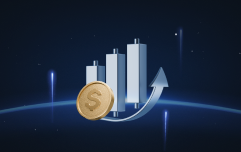NEW YORK, NEW YORK – SEPTEMBER 07: Carlos Alcaraz of Spain, right, celebrates match point against Jannik Sinner of Italy during their Men’s Singles Quarterfinal match on Day Ten of the 2022 US Open at USTA Billie Jean King National Tennis Center on September 07, 2022 in the Flushing neighborhood of the Queens borough of New York City. (Photo by Matthew Stockman/Getty Images)
Getty Images
The men’s singles draw at the U.S. Open has set Jannik Sinner and Carlos Alcaraz on another collision course. If the two best players in the world meet again in ‘the Big Apple’ on September 8, it will be their third face-off in a slam final. After the French Open classic, Wimbledon sizzled but didn’t quite hit Parisian heights.
Alcaraz And Sinner Dominate Slams
Alcaraz v Sinner 3 would be a fascinating watch, especially as both men have only ever tasted defeat to each other in a major final. The direction of travel is more alarming for the rest of the field. Sinner has claimed four of the last seven slams, while Alcaraz has three. Men’s tennis is being squeezed into a two-seater, and the rest of the field is being lapped.
Roger Federer and Rafael Nadal met seven times in slam finals during their peak between 2006 and 2009. Nadal and Novak Djokovic contested seven between 2010 and 2014. Alcaraz and Sinner are on course to go head to head on multiple occasions.
Novak Djokovic Struggling At Business End Of Slams
Djokovic is straining to delay his endgame. The challenge of the Next Gen graduates is what has kept his match spirit alive. “Thirty-six is the new 26,” he declared at the 2023 Wimbledon after disposing of Sinner in the semifinals. Since then, the Serbian has lost to the Italian three times at the All-England Club, Paris and Melbourne. His last major trophy was in New York two years ago.
If Djokovic isn’t able to stay the 15-day course, then who can challenge the deadly duo? Should the seeding work out up to the quarterfinal stage -it won’t – then the resistance movement will consist of Alexander Zverev, Taylor Fritz, Jack Draper, Ben Shelton, Djokovic, and Alex de Minaur.
Alexander Zverev Too Passive On Court And Not Enjoying Tennis
There is nothing to suggest that third seed Zverev is ready to take the next step up from being a three-time runner-up at slams. The German’s limp Wimbledon exit was painful to watch and even more troubling to hear about post-match. His admittance that he wasn’t good enough to win a big one after losing to Sinner in the Australian Open final was an understandable emotional reaction to a painful history.
When Zverev admitted that he was not enjoying life at all on and off the court, it was a cry for help that didn’t bode well for his immediate chances in the rarefied air of elite competition.
Jack Draper Still Learning On The Slam Ladder
Draper is slated to meet Sinner in the last eight, but the British fifth seed and world No. 5 wasn’t able to overcome 36-year-old Marin Cilic in the second round at Wimbledon. Away from the pressure of the home glare, Draper will draw on memories of his best-ever run in a major when he lost to Sinner in last year’s semifinal on Arthur Ashe.
Beating the best player in the world over five sets is a step up that Draper might not be capable of right here, right now, as he tries to deal with high pressure stakes. The Briton has a habit of running out of steam when expected to win against lower-ranked players. Losing to an inspired Alexander Bublik at the French Open was a case in point.
Time For Taylor Fritz To Stand Up On Home Turf
Taylor Fritz made it all the way to the final against the World No. 1 last year, but failed to take a set off Sinner in the final. Fritz enjoyed an excellent grass court season that was only stopped at the Sw19 semifinal stage by Alcaraz. The 27-year-old fell to the Cincinnati Open’s surprise package, Terence Atmane, and still falls short when the surge is expected.
A 0-10 record against Djokovic does not bode well if he meets the 24-time major champion in the last eight, but the Serbian has been inactive since Wimbledon. Fritz must show ruthless intent to show he’s ready to move on up from a solid top-five floater.
NEW YORK, NEW YORK – SEPTEMBER 06: Taylor Fritz of the United States celebrates after defeating Frances Tiafoe of the United States in their Men’s Singles Semifinal match on Day Twelve of the 2024 US Open at USTA Billie Jean King National Tennis Center on September 06, 2024 in the Flushing neighborhood of the Queens borough of New York City. (Photo by Jamie Squire/Getty Images)
Getty Images
Ben Shelton Bounces Into New York After Canadian Open Win
Ben Shelton has shown considerable strides in 2025, reaching the Australian Open semifinals before being taken down by the ridiculous efficiency of Sinner. Shelton carries extra gravitas following his maiden ATP 1000 title at Toronto. However, he struggles to break serve enough to constantly challenge the higher tier. It’s not impossible to imagine Shelton taking a set off Alcaraz, as he did in Paris, but to take three will need a leap up in quality and creativity. The big serve and punch might work on a good night, but the rallies test out all the armory.
Sinner has reason to be happier with the way the draw has panned out. Draper would be the first eye-opening obstacle in the quarters for the defending champion, but in the semi, the Italian could meet Zverev, eighth-seed Alex de Minaur, Karen Khachanov, or Andrey Rublev. If he’s medically fit, the road doesn’t look too strenuous.
Alcaraz has Most Difficult Path To U.S. Open Final
Alcaraz’s takeoff and landing look far more perilous. Reilly Opelka’s big serve could be his Botic van De Zandschulp nightmare again, but if that is safely negotiated then he could still face Daniil Medvedev, who beat him in 2023, Shelton or Ruud in the last eight and Fritz or Djokovic in the semis. Djokovic has drawn blood in the last two matches against the Spaniard, beating him at the Olympics and in the Australian Open quarters in January.
Carlos Alcaraz and Jannik Sinner are the hottest favorites for a rendezvous in New York. A fortnight is a long time in a major, especially as the players are tiring after an unrelenting schedule. If the match-up does work out, then any repeat of their famous 2022 quarterfinal on Arthur Ashe would be very tasty.
The Fedal Empire eventually had to cede major territory to Djokovic. Alcaraz and Sinner are a European alliance that could be harder to conquer.
Source: https://www.forbes.com/sites/timellis/2025/08/22/who-will-gatecrash-the-sinner-and-alcaraz-show-at-the-us-open/


